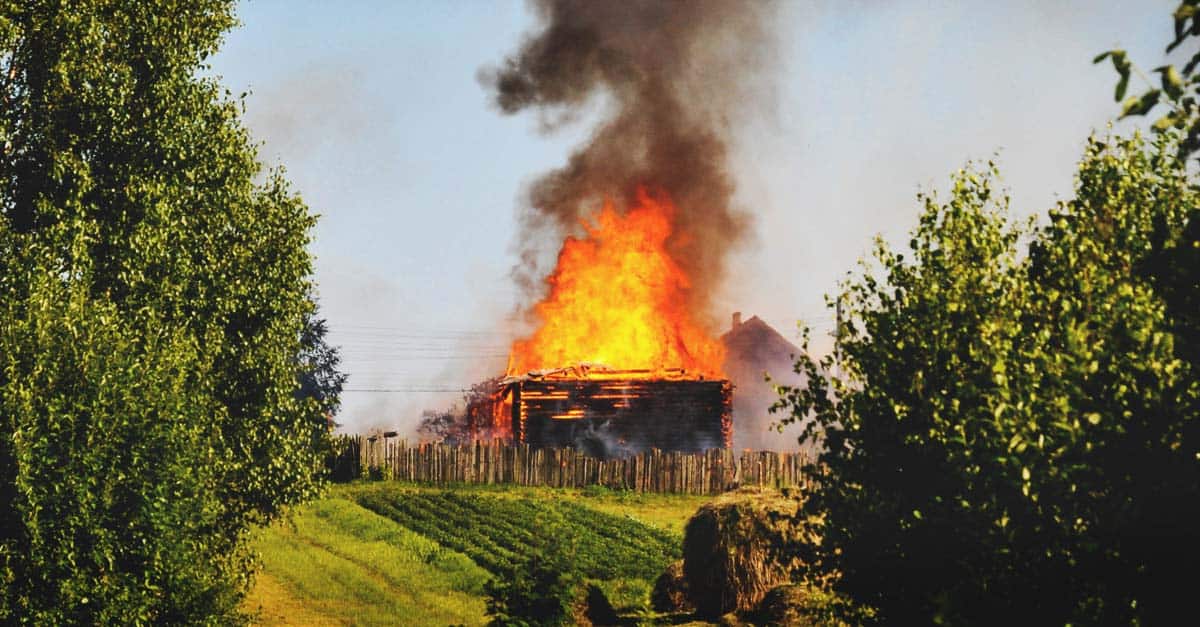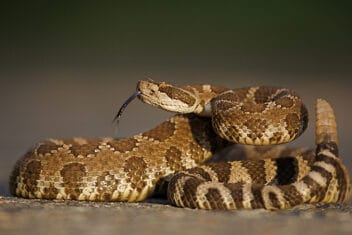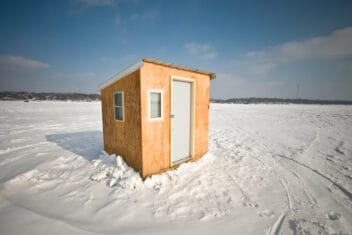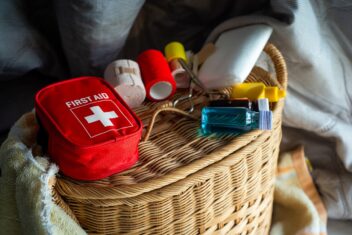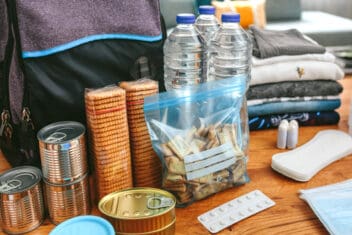If you have livestock, your barn is the core of your farm. Not only is it where your animals sleep at night, but it’s likely also an integral component of your farm’s management, serving as the headquarters for your day-to-day operations.
Now picture this – that barn is engulfed in flames, and there’s nothing you can do.
That’s a scary thought, isn’t it? Luckily, there’s plenty you can do for barn fire prevention. You just need to follow these simple steps to set a plan in motion.

A Farm’s Heart is The Barn
Some people might argue that barn fire prevention is not a major concern in their barns because their animals sleep outside at night.
That may be true, but just about everybody who has a barn has it for some specific reason, even if it’s not used directly for animal housing. Whether it’s a quarantine area for your sick or frail animals, an area to store your fodder or harvest, or a place to stash tools and equipment, your barn is vital, not to mention costly to replace.
Even if you didn’t build your barn yourself, you likely have a serious emotional and financial investment in it. The barn is the core of a homestead, often possessing a storied history that would be a shame to lose. You won’t just lose a ton of money if the barn burns down – you will also lose memories.
Add to that the fact that barn fires are notoriously hard to get compensation for under even the best farm owner’s insurance policy, and it’s vital that you do your part to prevent a fire from occurring, by following our barn fire prevention guide.
How to Assess Your Barn’s Risk
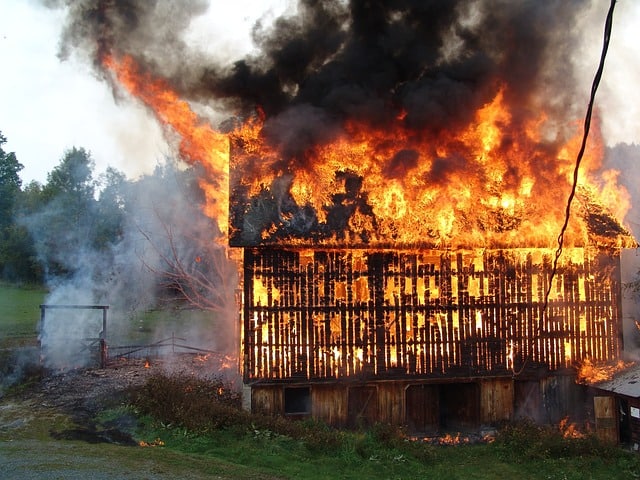
Typically, barns are packed with lots of flammable materials. Whether yours contains hay, bedding, grain, wood, or fuel, a barn tends to be a dumping ground for everything fire-causing.
You can’t do much to avoid these, but can you can be vigilant about what tends to ignite these flammable materials. Dropped cigarettes and faulty electrical wiring are the top two sources of barn fires, with chemical and bacterial reactions following closely after. Lightning is a rare cause of most fires.
1. Age
Without a doubt, older barns are more likely to combust than newer ones. This is because newer structures have to meet stricter building codes – many of them also are built standard with sprinkler systems, electrical shut-offs, and other features that can help prevent and stop a fire in its tracks.
2. Barn Construction
The way your barn is built can have a major impact on its fire safety. Consider the following questions when determining the fire safety of your barn:
- Has an electrical inspection been conducted in the last year?
- Are all electrical connections hard-wired (without extension cords)?
- Are there any unsealed passageways in attic fire stops?
- Is there space between all heating appliances and combustible building features?
- Have heating checks been conducted on all heaters within the last year?
- Are pathways to the barn clear to allow fire truck access?
You should also consider the materials out of which your barn is built. A great way to determine a newer barn’s fire safety risk is to look at its flame spread rating. Zero is ideal, but try to get as low to that number as possible.
If you have an older barn or one you’ve built yourself, just consider the materials. Many people are now making barns entirely out of steel, which is a much safer option when it comes to barn fire prevention than wood.
3. Location and Time of Year
Ideally, buildings should be located at least 100 feet from each other. If this is not possible, they should have fire-rated walls separating them. This will help prevent the unfortunate incidence of fires “jumping” from one building to another.
Unfortunately, fires are much more common during the hours between 7 pm and 7 am – this is a time period where there are less likely to be people keeping an eye on things. They’re also more common during the months of January, February, and March. Not only is there less traffic in and out of the barns at these times, but barns tend to be laden with bedding, heaters, and other risks during these months, too.
4. Contents and Surroundings
Unfortunately, protecting animal housing from a fire can be tough. Dry bedding is extremely flammable – straw can reach a hot temperature of 300° in just one minute, generating as much heat as gasoline at the same rate. All you need is one wayward spark.
If you store other combustibles, like gas cans or other fuels in your barn, you are also going to be increasing your risk of fire.
Not only the contents of your barn but also what is around it can impact its level of fire safety. If your barn is surrounded by dry grasses or lots of woodlands, you have a higher risk of it igniting if and when a forest or brush fire occurs.
It’s not just about the variables you can control, either. A large number of barn fires begin due to variables outside of the owner’s control. What are your neighbors doing on their property? What about at that campsite a quarter of a mile away?
While you can’t do much to control other people, you can enact measures on your own farm to safeguard your barn against disaster.
How to Mitigate Fire Risks to Your Barn

An ounce of prevention is worth a pound of cure – but unfortunately, when it comes to barn fires, there is seldom a cure. Once there are flames, it’s often too late to do anything that will make a difference. You might be able to reduce the damage, but you may not be able to recover at all.
Here are a number of suggestions for barn fire prevention in the first place.
1. Do Not Smoke
Do you need any more reasons to quit smoking? Because dropped cigarettes are some of the most common causes of barn fires, it’s vital that you enforce a strict no smoking policy in your barns.
2. Inspect Electrical Connections
On an annual basis, have a certified electrician inspect any appliances or wiring in the barns. If you can afford it, do this even more often than once a year.
Remember to let the inspector check any water heaters, lighting systems, heaters, and even pipe heating tape. Make sure all wiring is enclosed in PVC or metal conduit. Unplug any electrical appliances when they aren’t being used. Avoid using electrical equipment that is frayed or otherwise in poor shape.
3. Check Your Hay
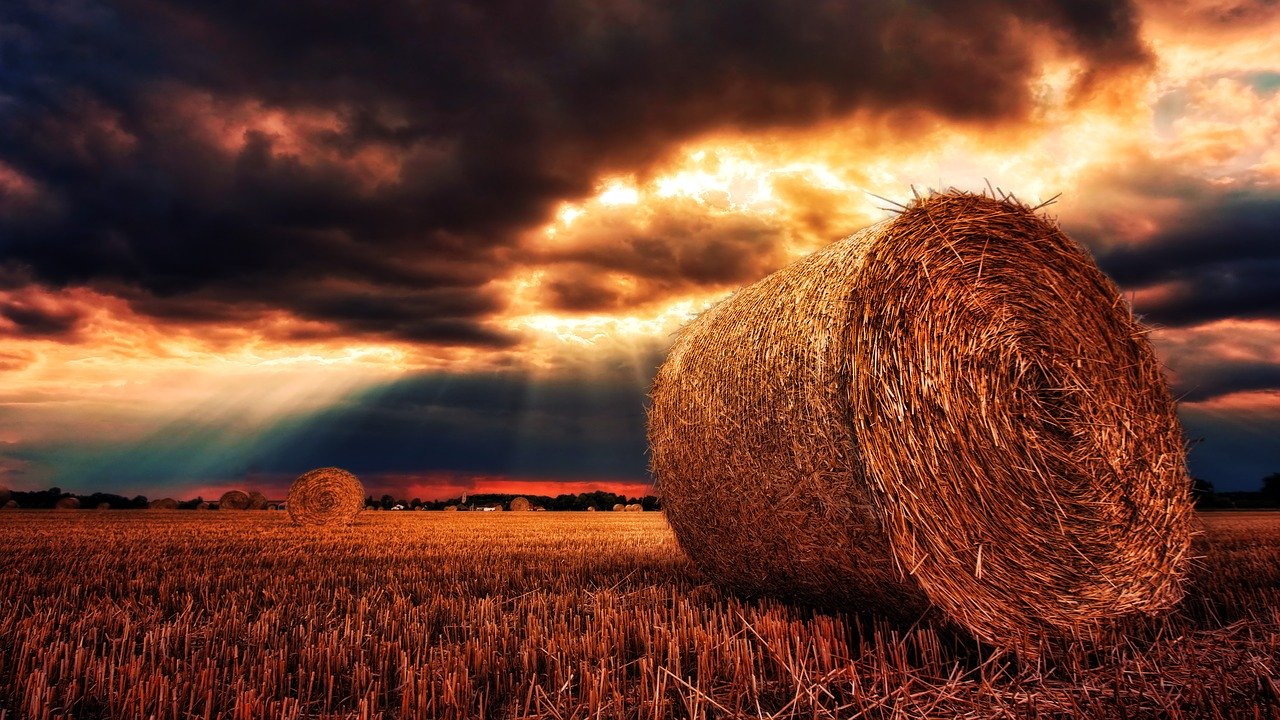
Hay is a fire source that is unique to farmers. The risk arises from hay that is damp or not completely cured. The heat begins to be generated while the hay is on the ground before baling, during the curing process. It’s nearly impossible for the average person to notice the smoldering that begins inside the hay before it’s even baled.
Nevertheless, this accumulation can lead to a flame once spontaneous combustion has occurred. Most barn fires result from hay within six weeks of being baled. To prevent this problem, you need to check the moisture range of your hay – it should be no higher than 16 or 17%.
You can easily check the hay’s heat by sticking a temperature probe into the center of each bale. If the temperature is 150° or more, it is probably going to continue to rise. You need to take action. If it is 175° or higher, call the fire department – it’s about to burst into flame.
As a general rule of thumb, the greener the hay happens to be, the looser it needs to be stacked. This will allow for cooling and curing without the danger of combustion.
4. Keep Grass Trimmed
Do your best to control grass, weeds, and brush around the barn. This will not only make it look nicer, but it will also reduce another potential source of fuel for a fire – dried plant matter.
5. Remove Combustibles
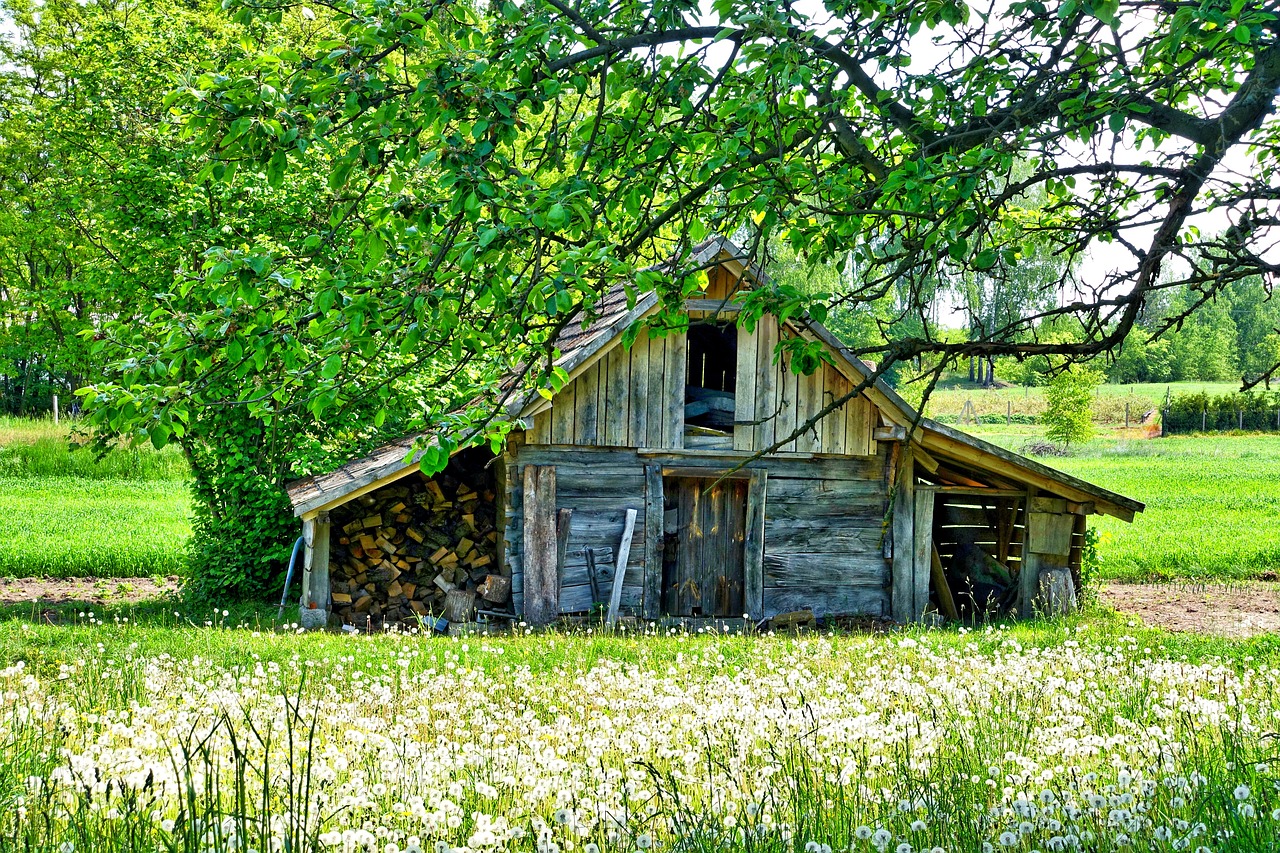
I get that you can’t take everything flammable out of your barn – your animals need bedding, and they need to eat. But try to avoid storing excessive amounts of straw and hay in your barn whenever possible. Try to limit it to a two day supply for less. You might also consider using separate storage facilities for your animal’s sleeping quarters and their extra feed, too.
The same applies to using your barn as a woodshed or to store gasoline. Not only does this increase the risk, but should a fire start, the heat would be more intense, and it would burn longer, making it more challenging to extinguish the fire.
6. Be Careful With Space Heaters
Space heaters are often unnecessary in barns, anyway – usually, all your animals need is a bit of bedding and some body heat from their companions to stay warm. That’s true even in the coldest months of the year.
However, if you choose to use a space heater for whatever reason, be very mindful of the risks. The same rule applies to heat lamps. Use these only according to the manufacturer’s guidelines, and do not leave them unattended.
7. Don’t Forget About Machinery Exhaust
When people think about fire risks, they automatically think about cigarette butts and frayed electrical wires. However, machinery exhaust is a commonly overlooked source of combustion, too.
Trucks that are driven into areas that store hay or bedding materials have been known to ignite those that they come into contact with, as the hot exhaust and catalytic converters touch things off. Keep them out of the barn!
In addition, all vehicles should be parked far away from living quarters, including the barn. Remember, store any fuel and fuel tanks as far as possible away from the barn, too.
8. Install Smoke Detectors
Just as in your home, smoke detectors should be features in your barn, too. Test them twice a year (or ideally more often) and don’t neglect them when they go off.
9. Keep the Barn Clean
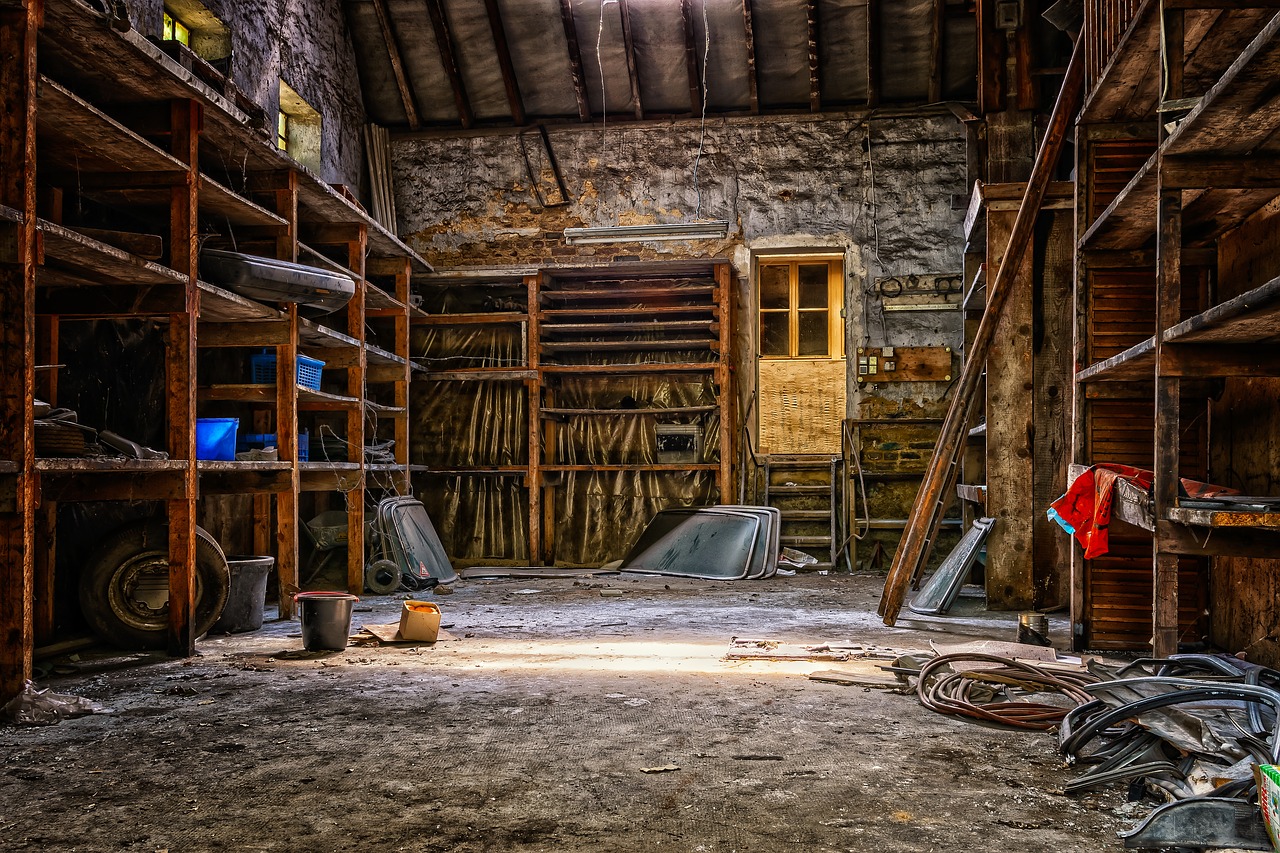
Keep your barn as clean as possible to help reduce dust and other combustibles. You should also clear out cobwebs, dirt, chaff, cleaning rags, oils, trash, or other fire hazards.
Not only do these increase the risk of a fire starting, but they also put more obstacles in your way if you need to get out in the case of a fire. All aisles should be clear.
10. Reconsider Your Stall Construction
The way your barn stalls are built is also important. Every barn should have a system in place for the easy evacuation of all of your animals.
Stall or interior doors should open outward into the aisle or slip easily open so that you can get animals out more quickly. Having multiple exterior doors is also a good idea, and latches need to be simple to access, too.
11. Have a Plan in Place
What are you going to do if disaster does strike? Make sure everybody is familiar with the evacuation plan for the barn, and have a “what-if” worst-case scenario plan in place. Keep fire fighting equipment like hoses and fire extinguishers handy, and have extras on hand in case fire blocks your path to them.
You should also have halters and leads ready to go in case fire strikes and you need to get animals out of the barn. Ideally, these should be stored somewhere away from the barn, but not so far away that it will take too long to reach them.
Consider having your fire department out to inspect your barn. See if they have any suggestions or areas of concern.
We’re On Fire – Now What?
You’ve done everything you can to reduce the likelihood of disaster striking your barn. Unfortunately, you can’t control everything, no matter how hard you try. If an errant lightning bolt or cigarette butt from a passing motorist hit your barn, things are going to go up in flames.
Here’s what you need to know.
1. Have Water on Hand

Without a doubt, your success in fighting a barn fire is going to depend on if you have water on hand. Make sure you have adequate water available that is accessible year-round – and that everybody knows how to get to it. An even better solution is to have a standard remote connector installed adjacent to your water supply for easy connection by the fire department.
Although it’s an expensive solution, a good idea is to install rooftop sprinklers in your barn. Many builders now include these as standard options when constructing bars. Even if you have an older barn, it may be worth your while to consider installing some.
2. Invest in Some Extra Fire Fighting Equipment
You don’t need to be a firefighter in order to know the basics behind fighting a fire on your farm. Again, barn fire prevention is going to be the most effective way to reduce your losses due to fire – but you can always invest in some extra equipment in case a disaster does strike.
At the very least, have some reliable fire extinguishers on hand and make sure these are inspected regularly. Fire management gear like backpack fire pumps, extra water hoses, and foam can be used in a crisis. Make sure you have more than one option on hand and that you know how to use it.
3. Make Sure Roadways and Exits Are Cleared
When you’re considering the design of your barn, something else to consider is how easy it is for people and animals to get out of the barn. Make sure you have a sufficient number of exits, along with emergency lighting, signage, ladders, and stairs. Everybody who works at or visits your farm should be acquainted with your fire management plan.
In addition, you need to make sure an all-weather laneway stays open to allow for fire truck access to the building if there is a fire. This means maintaining the road by grading and plowing it on a regular basis.
The key to successful barn fire prevention is investing in one important tool – your common sense. Be reasonable about your fire management and prevention plan and reduce all potential risks. These suggestions, along with early detection devices like smoke alarms and a little bit of good old fashioned vigilance, can help prevent an unnecessary disaster on your farm.
